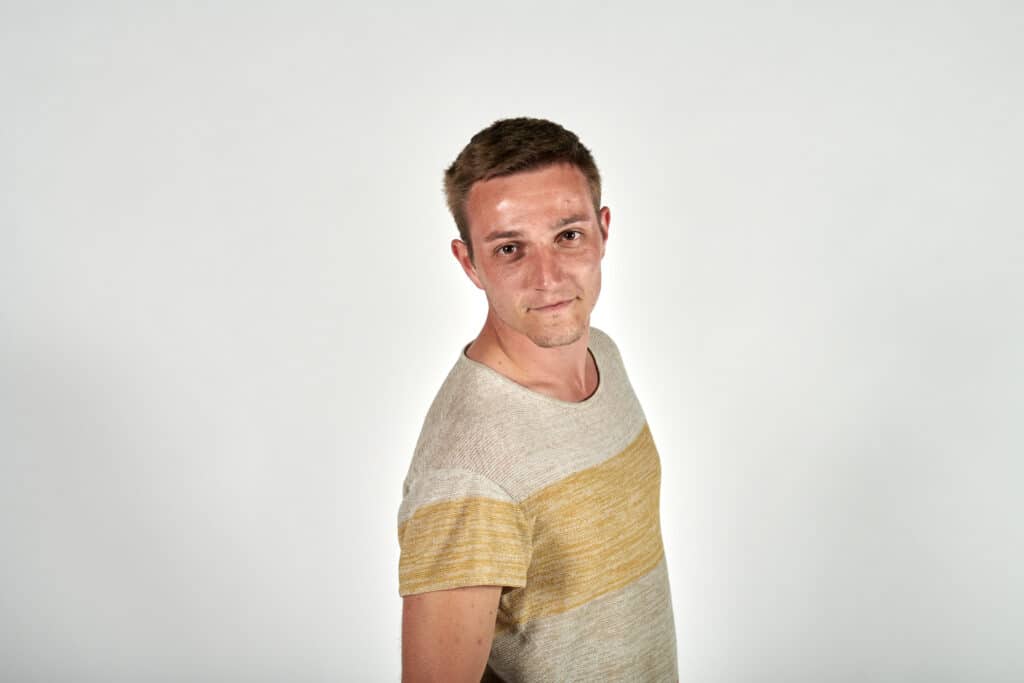– 4 questions to Thibault Desaules, dancer and transmittor
Thibault was trained at Codarts Rotterdam – University of the Arts from 2010 to 2014. In his final year of training, he joined the Introdans Ensemble for Young People. He joined the ICKAmsterdam company in the Netherlands, before creating Extremalism by Emio Greco and Pieter C. Scholten with the Ballet National de Marseille. He dances for the Korzo Theater in The Hague before joining the CCNR/Yuval Pick company from 2017 to 2021. As a freelancer, Thibault continues his collaboration with CCNR as a performer and transmitter of Practice. Today, he co-directs Compagnie Vigousses with Zoé Lecorgne.
1. Does the dancer-performer have to be creative? Isn’t that the choreographer’s role?
I think it’s important for a performer to be creative, as it adds another layer to the choreographer’s idea. He will work more on the dramaturgy or construction of the show. The performer, on the other hand, can improvise or create things on his or her own, thus completing the choreographer’s “toolbox”.
2. How does the Practice method mobilizes the creativity of the performers? Through which exercises?
The Practice method encourages the performer to be creative, by opening up the imagination and encouraging improvisation. During classes or workshops, we delve into the fundamental elements, the basics of the method, such as rotation or weight transfer, and thanks to improvisation, we question them: can I do it differently? The notion of letting go, present in the method, allows us to “explode” our sensations. Although the exercises in Practice are written and codified, freeing the imagination and allowing dancers to stay awake and creative.

3. Why does Practice enable dancers to develop their expressivity?
Expressivity comes with notions of presence and body “awareness”: why do we make these movements? How are they made? Even if there are the concepts of letting go and the willingness to dig inside oneself constantly, they come to “fill up” the body. Practice is a complete method that offers a “full” body. The body’s expressivity is acquired through precise exercises in gaze, touch, “awareness” of actions…
When I transmit Practice, I try to go against the dancers’ habits. I try to push them to do things they’re not used to do. I put a lot of emphasis on the notion of letting go: you just have to go for it and try. Anything is possible! You have to think outside the box. The dance takes place between four walls. So if I don’t create anything, nothing happens. In a class, as on stage, I have to stay alive, let a creative aura or an awakened imagination emerge.
4. Can you really learn to be creative? Isn’t creativity innate?
Everyone has creativity in them, even if it’s not something we cultivate enough these days. Creativity is not valued in our society. But everyone can learn to be creative, or already is. It’s work. It’s cultivated. Through Practice or other methods, creativity enables you to become aware of your own body, to go even deeper inside yourself to bring things out into the open. I don’t know if creativity is innate. I know she’s spontaneous, like a creative child. You have to be curious and stay curious.

